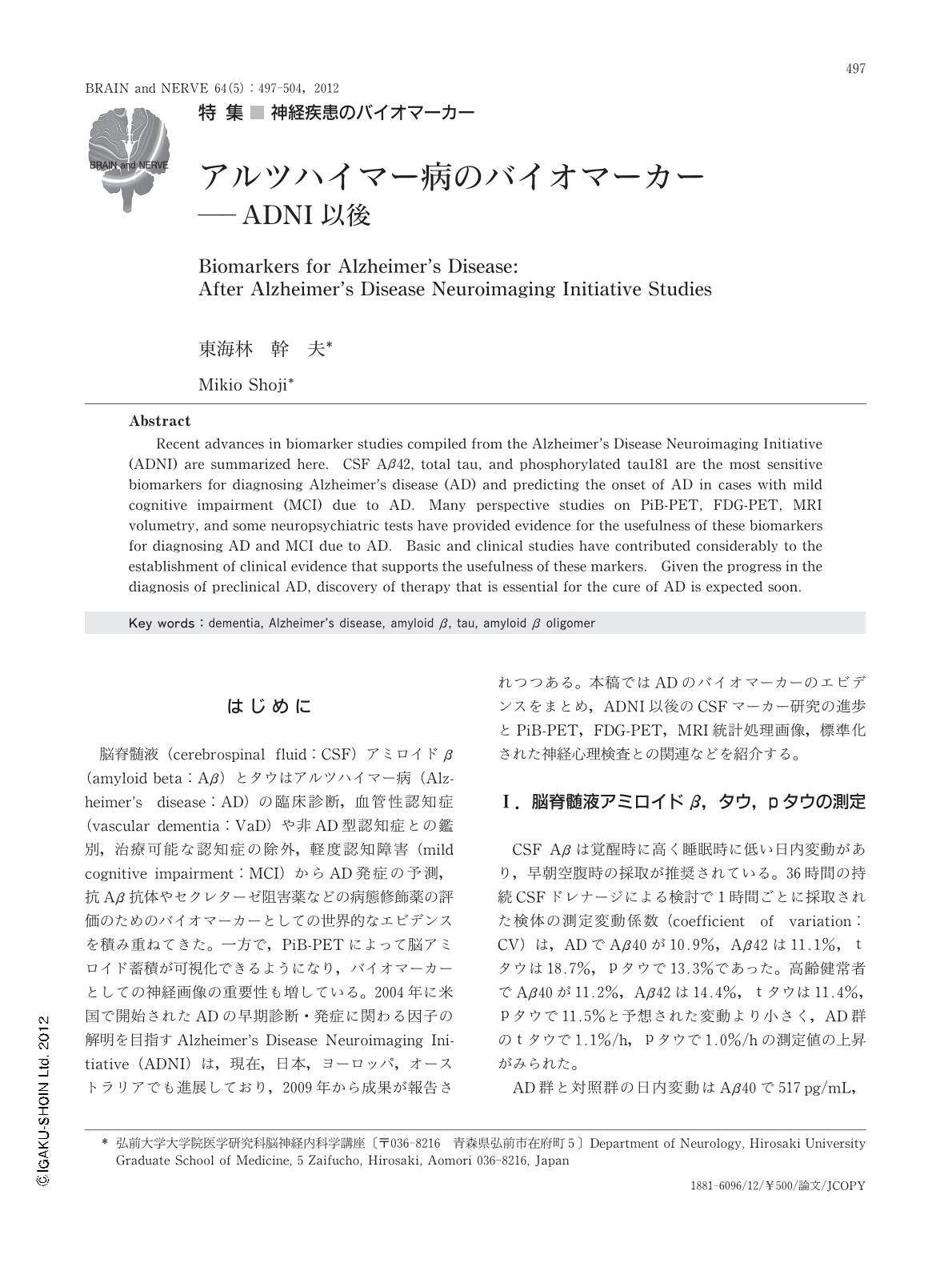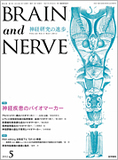Japanese
English
- 有料閲覧
- Abstract 文献概要
- 1ページ目 Look Inside
- 参考文献 Reference
はじめに
脳脊髄液(cerebrospinal fluid:CSF)アミロイドβ(amyloid beta:Aβ)とタウはアルツハイマー病(Alzheimer's disease:AD)の臨床診断,血管性認知症(vascular dementia:VaD)や非AD型認知症との鑑別,治療可能な認知症の除外,軽度認知障害(mild cognitive impairment:MCI)からAD発症の予測,抗Aβ抗体やセクレターゼ阻害薬などの病態修飾薬の評価のためのバイオマーカーとしての世界的なエビデンスを積み重ねてきた。一方で,PiB-PETによって脳アミロイド蓄積が可視化できるようになり,バイオマーカーとしての神経画像の重要性も増している。2004年に米国で開始されたADの早期診断・発症に関わる因子の解明を目指すAlzheimer's Disease Neuroimaging Initiative(ADNI)は,現在,日本,ヨーロッパ,オーストラリアでも進展しており,2009年から成果が報告されつつある。本稿ではADのバイオマーカーのエビデンスをまとめ,ADNI以後のCSFマーカー研究の進歩とPiB-PET,FDG-PET,MRI統計処理画像,標準化された神経心理検査との関連などを紹介する。
Abstract
Recent advances in biomarker studies compiled from the Alzheimer's Disease Neuroimaging Initiative (ADNI) are summarized here. CSF Aβ42,total tau,and phosphorylated tau181 are the most sensitive biomarkers for diagnosing Alzheimer's disease (AD) and predicting the onset of AD in cases with mild cognitive impairment (MCI) due to AD. Many perspective studies on PiB-PET,FDG-PET,MRI volumetry,and some neuropsychiatric tests have provided evidence for the usefulness of these biomarkers for diagnosing AD and MCI due to AD. Basic and clinical studies have contributed considerably to the establishment of clinical evidence that supports the usefulness of these markers. Given the progress in the diagnosis of preclinical AD,discovery of therapy that is essential for the cure of AD is expected soon.

Copyright © 2012, Igaku-Shoin Ltd. All rights reserved.


